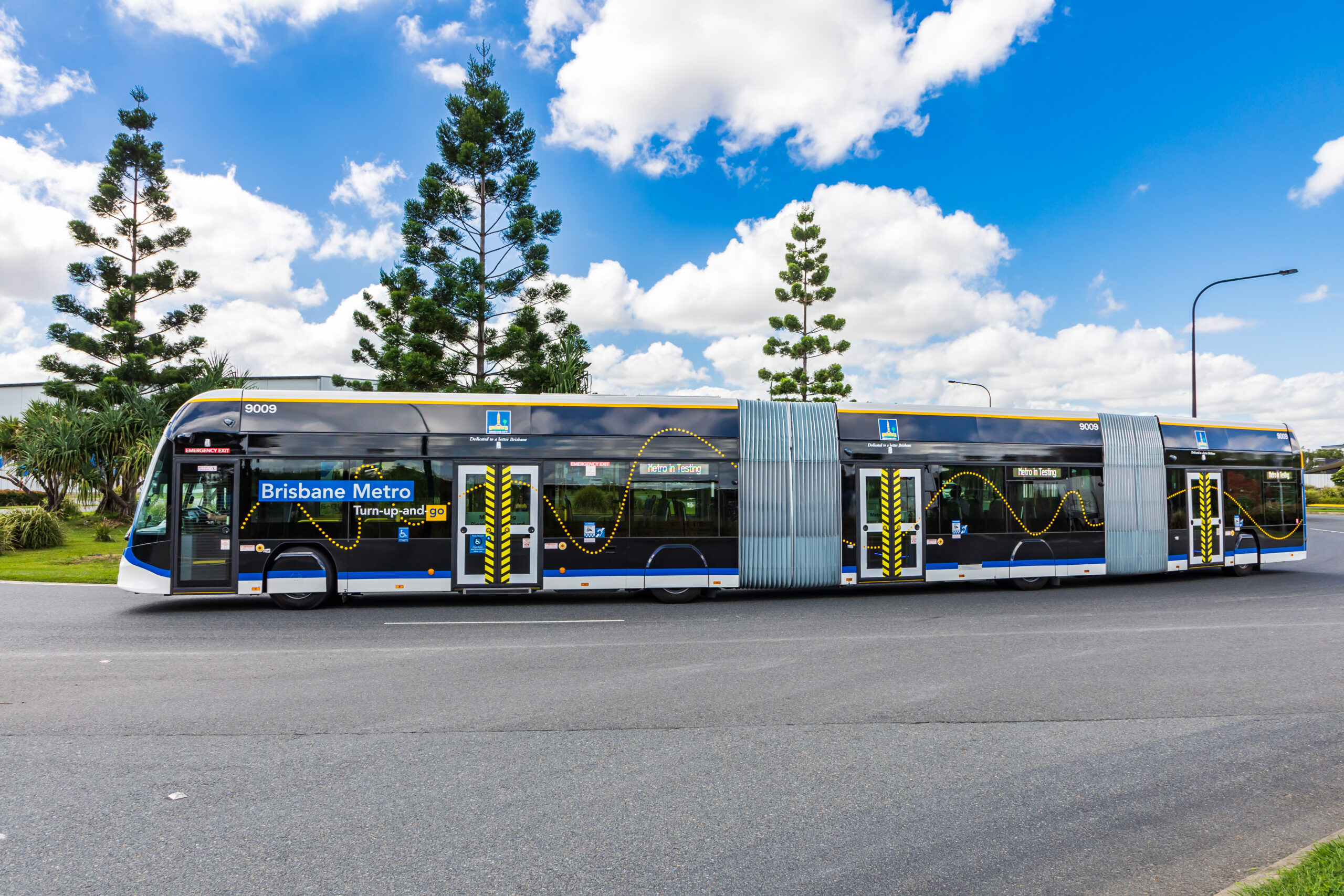Sign up for daily news updates from CleanTechnica on email. Or follow us on Google News!
Royal Enfield has a rich history in motorcycles, tracing its roots back to 1901 when the company’s first motorcycle rolled out of the factory. Over the last 123 years, the company has evolved its products and business practices to stay afloat amidst turbulent times.
A Rich History
When World War II swept across Europe, Royal Enfield was quick to mobilize, packaging their 125cc bike into a custom frame designed to be air dropped onto battlefields. Dubbed the “Flying Flea,” these provided rapid mobility for paratroopers being dropped behind enemy lines.
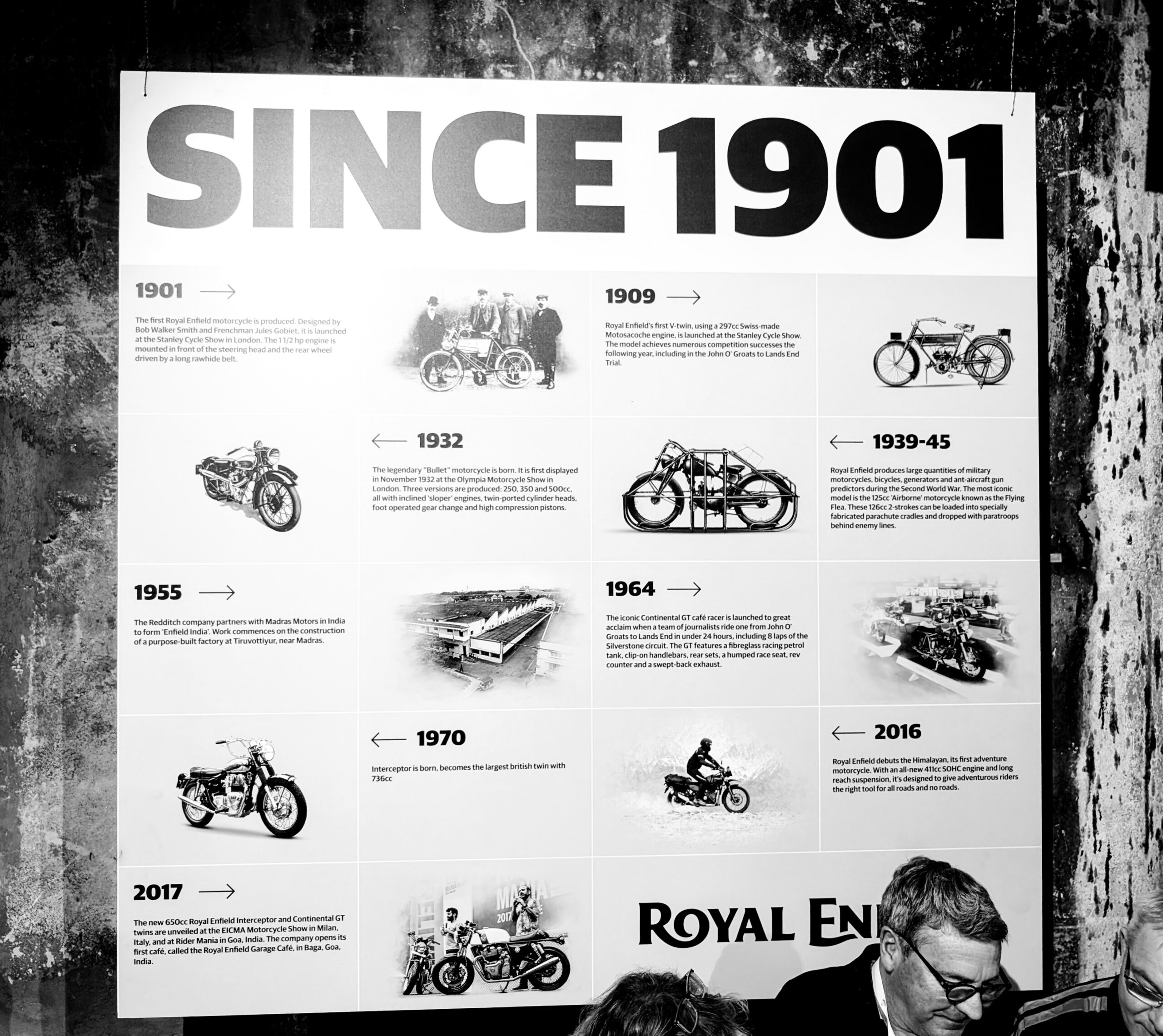
Since then, the company has continued to innovate, defying the odds as the longest continuously operating motorcycle manufacturer in the world. Over the last 30 years, Royal Enfield grew from a small boutique motorcycle manufacturer producing 12,000 motorcycles per year to a powerhouse cranking out 930,000 motorcycles in 2023.
So, when Royal Enfield invited CleanTechnica to Milan to be some of the first in the world to hear about the next chapter in the evolution of Royal Enfield, we jumped at the opportunity.
Disclaimer: Royal Enfield paid for the author’s travel and accommodations to attend the launch event at EICMA in Milan, Italy.
A New Chapter
Aside from a few teasers ahead of the unveiling, Royal Enfield kept the announcement under wraps. When the time came, their leadership team set the stage and announced a completely new brand dubbed “Flying Flea” in a throwback to their disruptive bike from years past. “The next chapter for the next 25 years starts today,” Royal Enfield’s managing director Siddhartha “Sid” Lal said at the launch event.
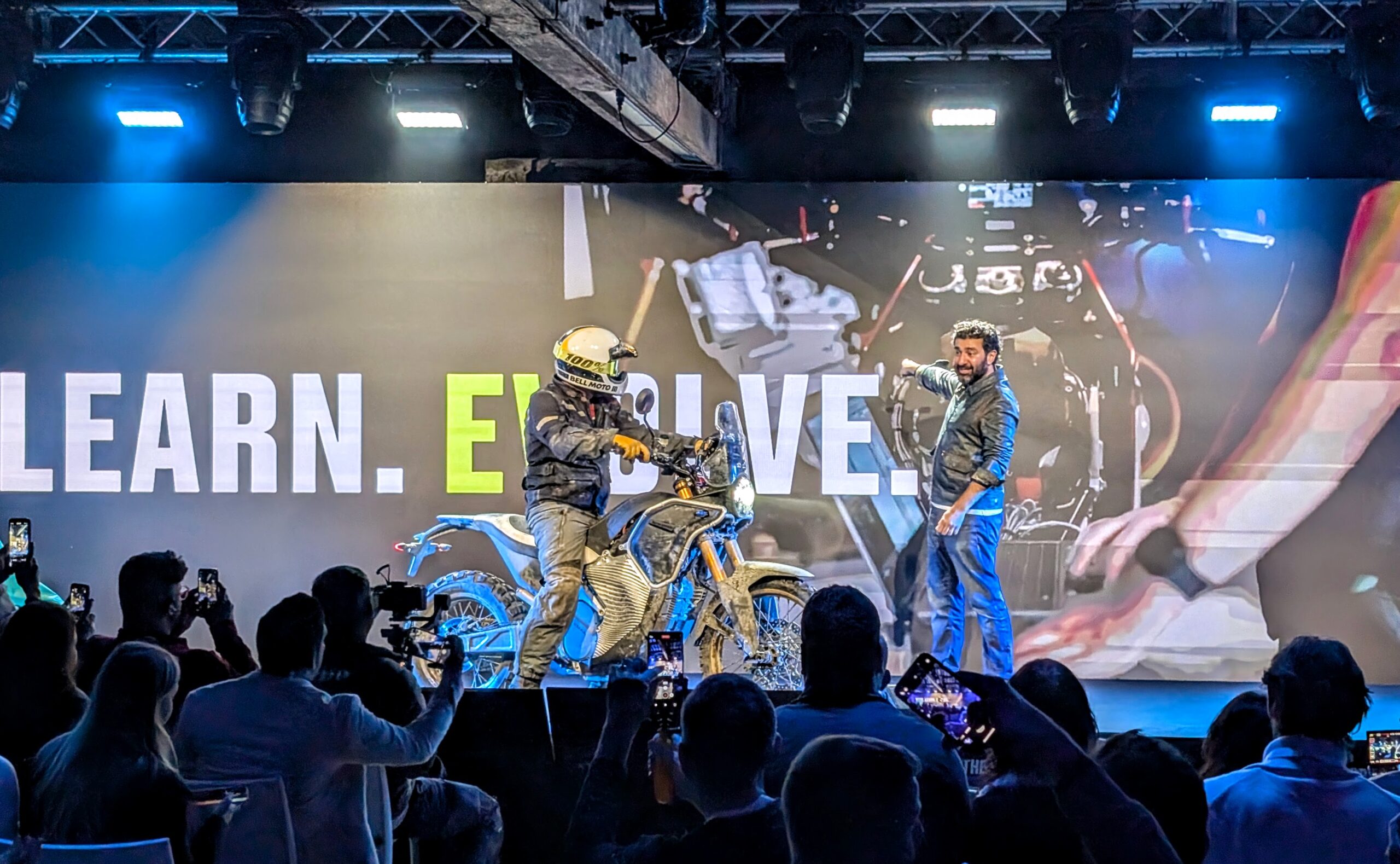
The original Flying Flea motorcycles needed to be lightweight, easy to use, nimble, and efficient both to suit a range of riders and to maximize the number that could be packed onto a plane. The innovative spirit behind the original Flying Flea informed the team at Royal Enfield as they shaped the fully electric future over the last decade.
It Is Written
You see, Royal Enfield’s evolution to fully electric motorcycles is no accident and it’s not something they’re doing in response to an external regulation or mandate. They first dove into exploring the potential of electric powertrains 10 years ago and officially launched the effort to develop a Royal Enfield electric build 6 years ago.
“It’s a market that has not been cracked,” Lal said. Batteries are big and heavy, which made translating the core values of traditional Royal Enfield customers difficult to translate into an electric motorcycle. It’s the same reason so many electric motorcycle companies have failed over the years.
“If you want a long range electric motorcycle today, you can’t have it,” Lal said. “To go long range, the battery gets big, heavy, expensive.” It’s a technological game of Catch 22 of sorts, where adding enough battery capacity to get road trip range means the bike gets bulky and heavy, translating to a suboptimal riding experience.
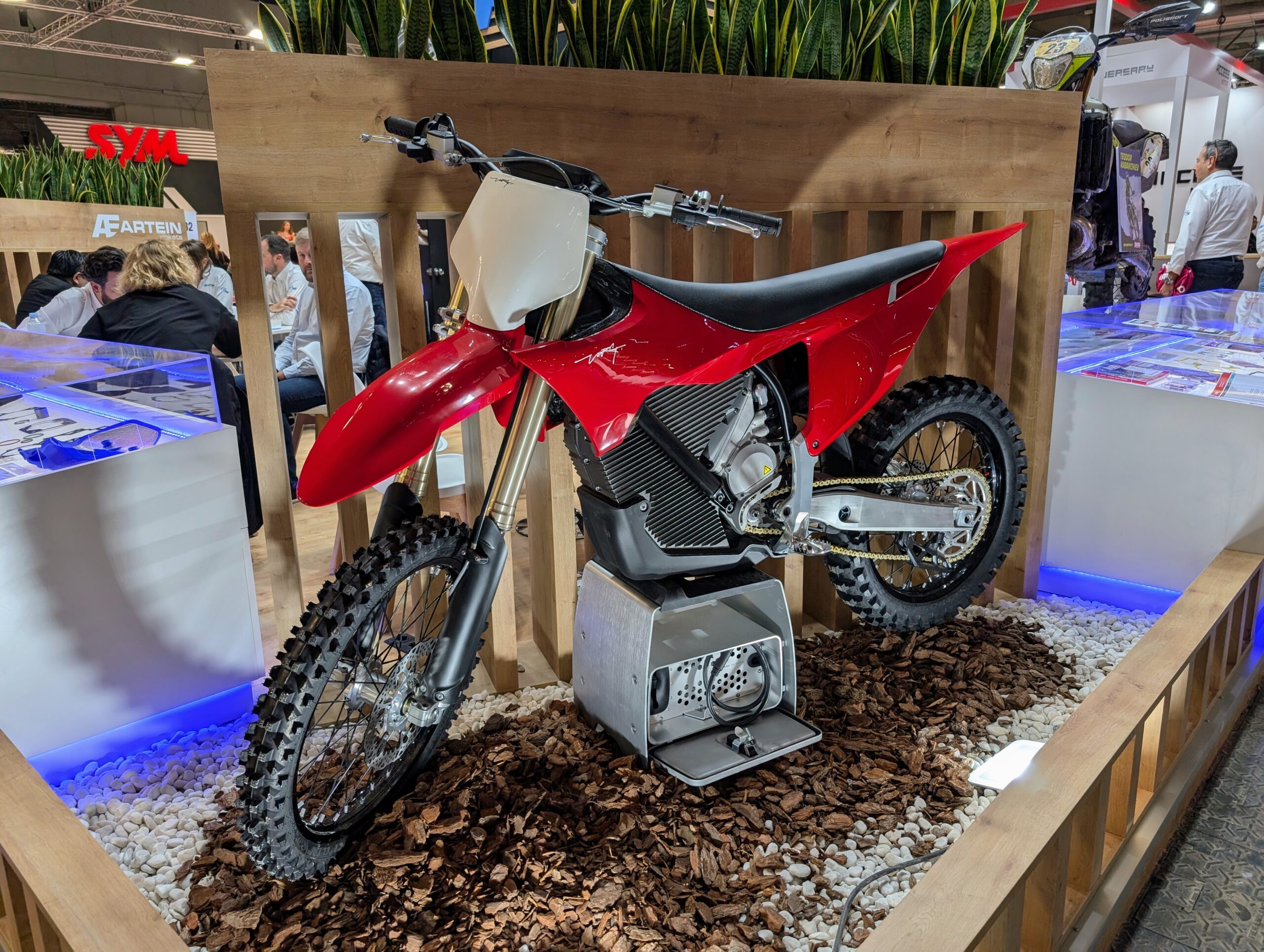
Early on, Royal Enfield looked outward in the industry to find a partner to work with. After surveying the entire space, they found Stark and made a strategic investment early on. Royal Enfield CEO B. Govindarajan said they specifically selected Stark as a partner because of their expertise in modular design and packaging.
They believe using Stark’s expertise and combining it with Royal Enfield’s ability to drive scale up and cost down is a key piece of a winning formula. Indeed, the partnership has been extremely productive, as Royal Enfield is currently using two of Stark’s 6.75 kWh battery packs in parallel to power a Stark motor on version 2 of their Himalayan test mule, among other collaborations.
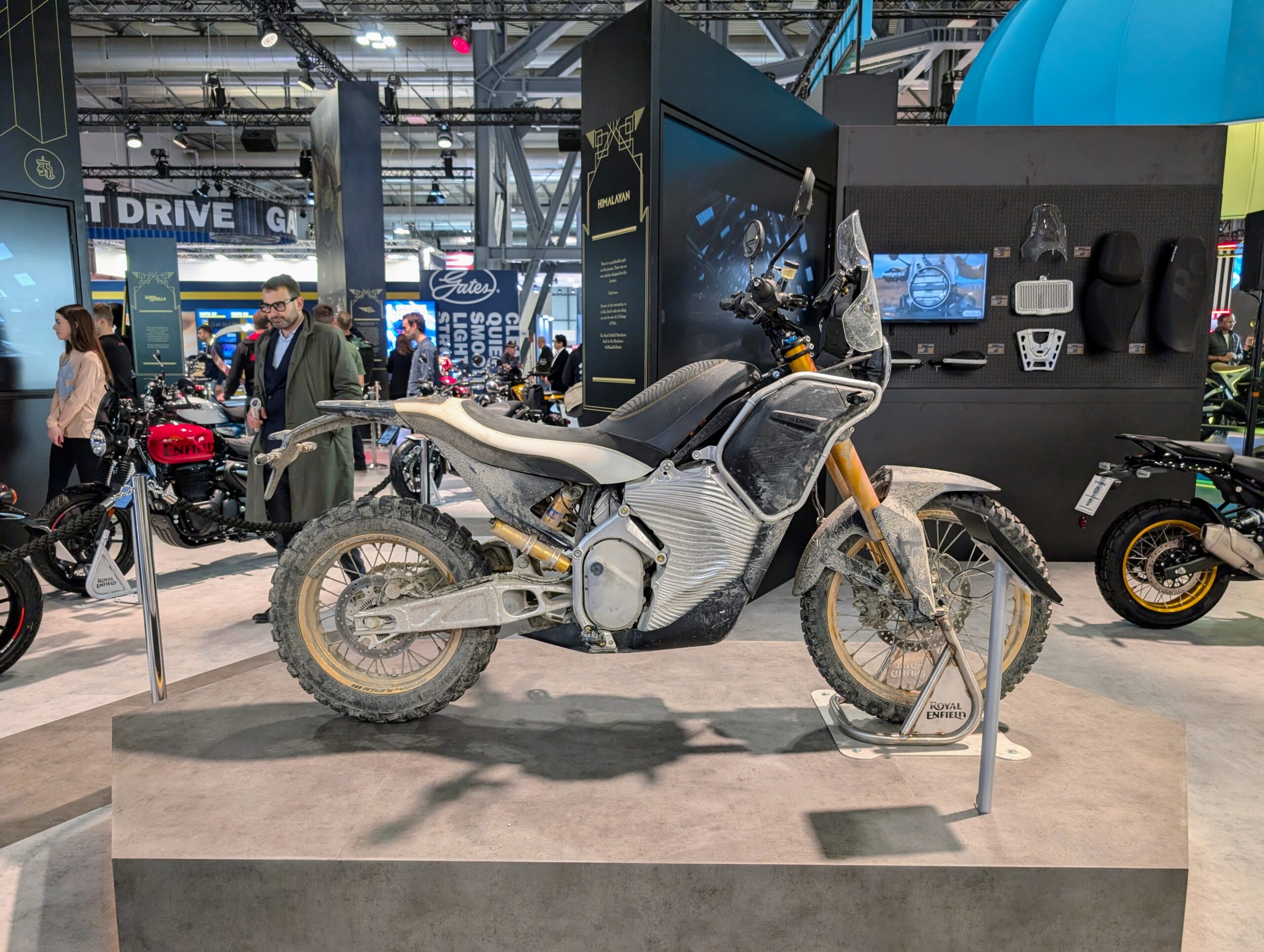
Royal Enfield’s Himalayan test mule is an absolute tank, with a massive amount of power, battery capacity, and range. Kitted out with composite armor, Royal Enfield’s team rips around the Himalayas with their fleet of 7 test mules to put new technologies and ideas to the ultimate test. It’s not headed to production anytime soon, but rather, is intended to be a flexible test bed for new ideas.
The Flying Flea C6
Chapter one of Royal Enfield’s story is steeped in its rich history. It’s a legacy brand building a stable full of classic cruisers. Even still, that wasn’t going to stop the team from building out what they saw as the inevitable evolution into electric powertrains.
“We can’t hold the company back from what it should be,” Lal said, speaking to the inevitability of the transition to electric. The brief history of electric motorcycles is already littered with the remains of numerous failed ventures, but after taking time to build capability, understand the landscape, form partnerships, and put the right team together, they were ready to launch.
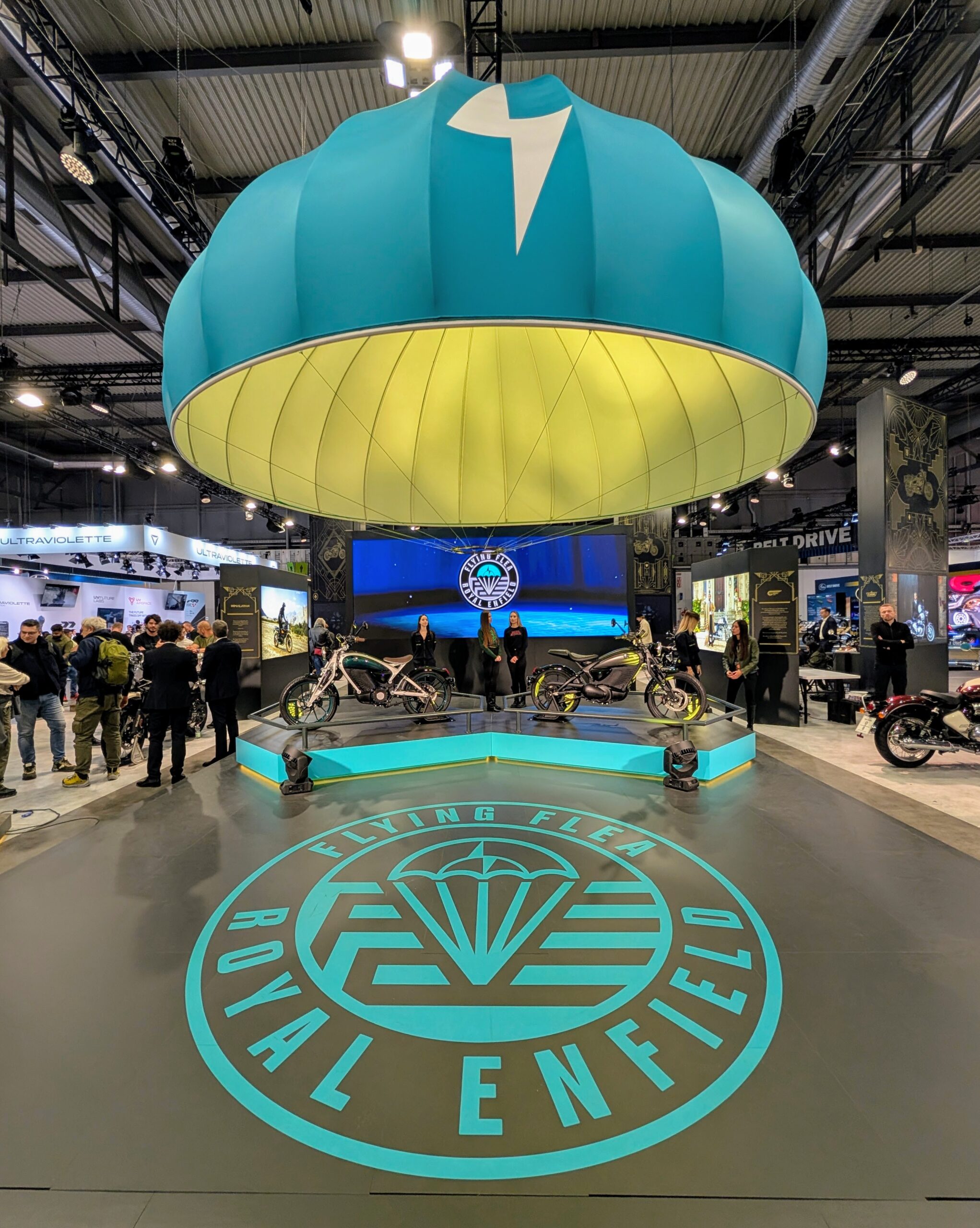
Flying Flea is being launched from Royal Enfield, with all their strength and backing behind it. “We’re not betting the entire farm on it,” Lal said. “We are putting money behind it, but if it doesn’t work, we’ll be okay.” It’s understandable and should let the team at Flying Flea build out the brand one step at a time, but with the knowledge that they can take a moonshot on a new technology if it feels right.
The curtain was finally pulled back and a modern, sleek cruiser was revealed. Smooth, flowing lines. A powerful frame surrounding a beautifully crafted body. A billet battery glinting in the light, harkening back to the classic V-Twin motors from an age gone past. The C6 is an electric cruiser at heart that pulls Royal Enfield’s mastery of motorcycles forward into the electric age.
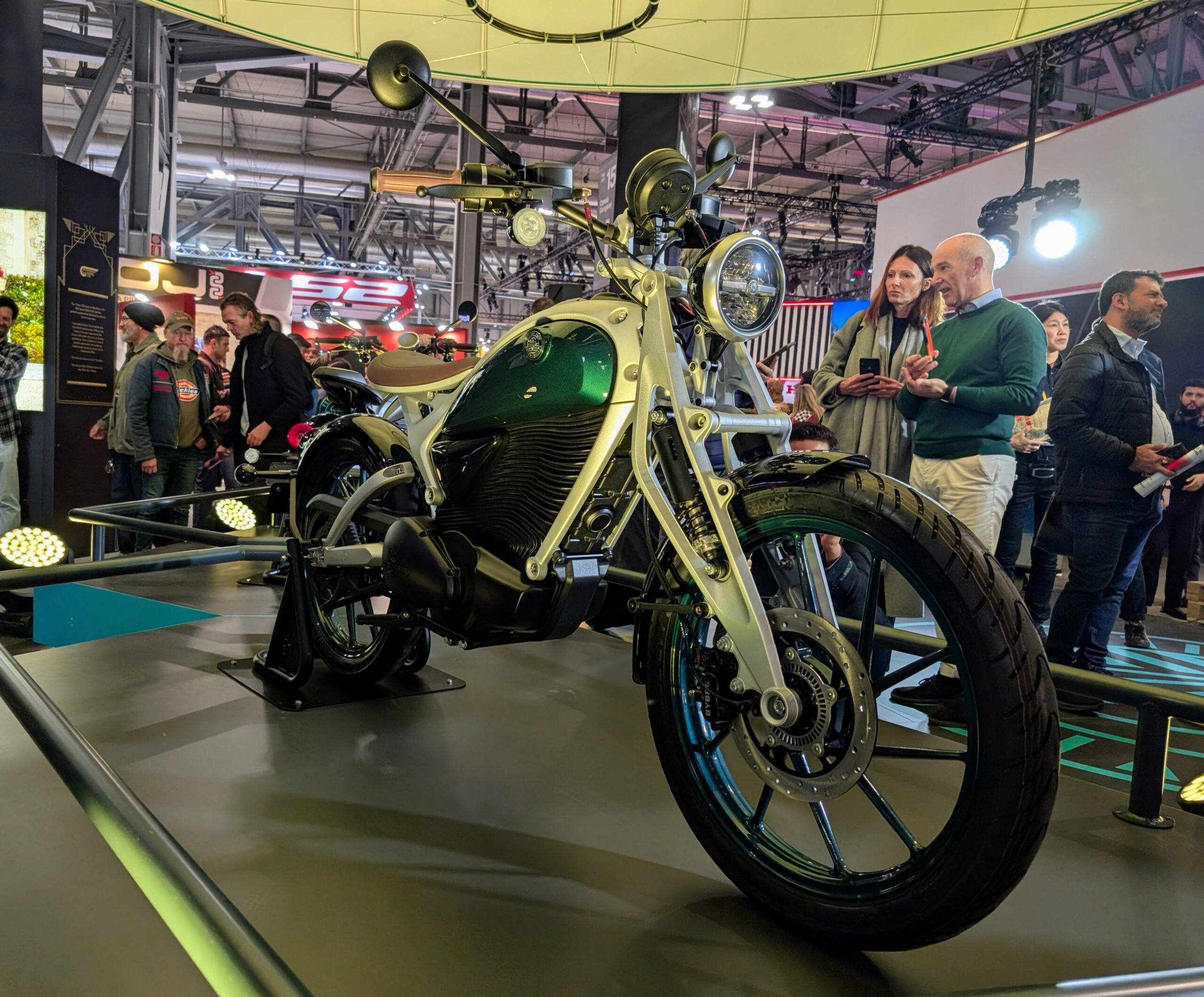
As Royal Enfield put it, the new Flying Flea C6 is aimed at people looking for something that can handle their daily commute in the city and then some. They call it city plus.
That plus is the important bit because it’s the fun part. The plus is what you do after you get off work and you’re looking to blow off some steam. The plus is the rip through the mountains, taking tight turns through the canyons as you wind down from the day. The plus is the why behind what we do. Why you work hard every day. Why you save your money. Why you work Monday through Friday. The answer is the plus.
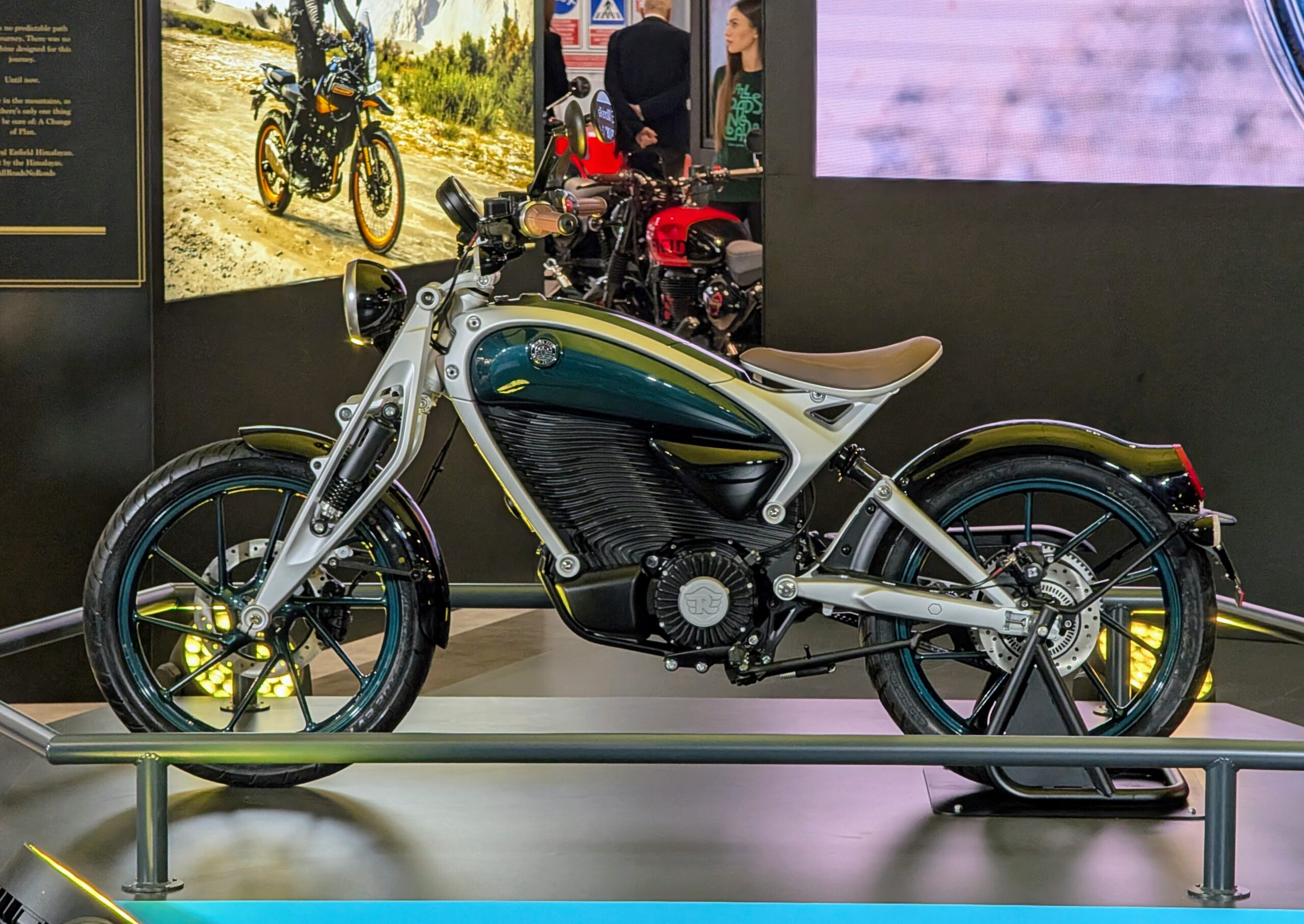
The C6 was designed as a city plus bike to satisfy the needs of daily riders but with enough range for afternoon trips to the mountains or rips through the local canyons. It’s not going to be a road trip hog because the technology just isn’t there yet, according to Royal Enfield’s team.
They have been riding prototypes of the new build around for the last few weeks and are confident it’s on point. “It feels like a full motorcycle,” Lal said.
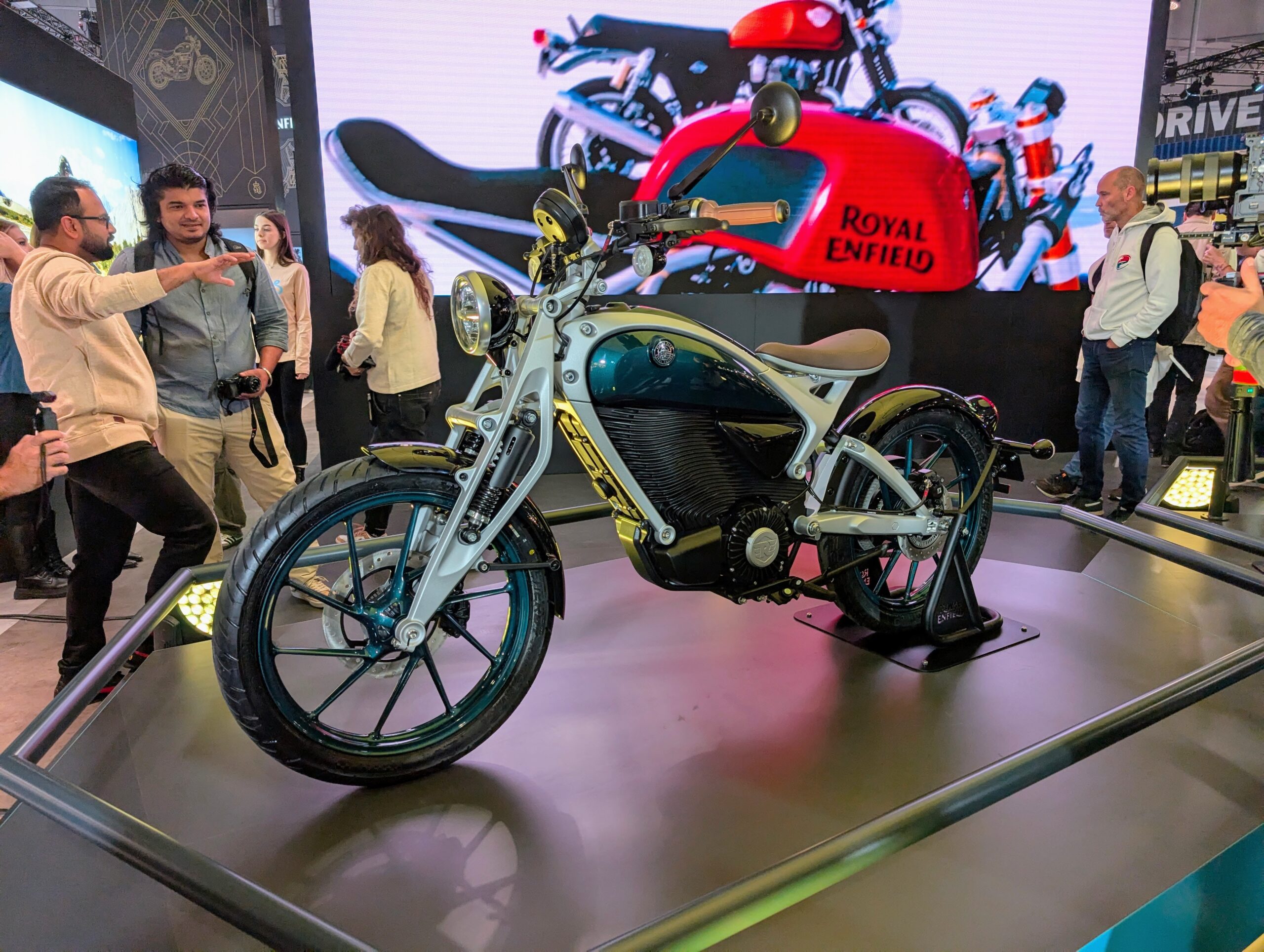
The newly anointed Flying Flea leadership team was light on the details at the launch regarding price, power, range, battery capacity, and chemistry for the C6. I asked directly and they weren’t shy about their reasoning. With a planned launch in early 2026, they admitted that they still have a lot of work to do to iron out these exact details. Though, they do have targets in mind.
If we look at Royal Enfield’s existing lineup and the planned global distribution of the Flying Flea bikes, it’s sensible for them to come in at sub-$10,000 in price. Range feels like it has to be 80–100 miles per charge for the first bike, but it’s easy to imagine this increasing or decreasing to target city riders and adventure riders alike.
Expect to see more details in the coming months with a full reveal at EICMA 2025 at the latest if they’re to have any shot at hitting their planned production launch in 2026.
The Flying Flea S6
At the end of the presentation, they also dropped news of an Enduro-style build on the same 6-series platform that they’re calling the S6. This second bike is much thinner, lighter, and more agile for anything the mountains might throw at you. It ditches the city all together. Looking to solve the plus by itself. This is the bike you dust off on weekends and take out for ripping around the outdoors, or that you’re pining for from your desk as you look forward to something fun after the daily grind is over.
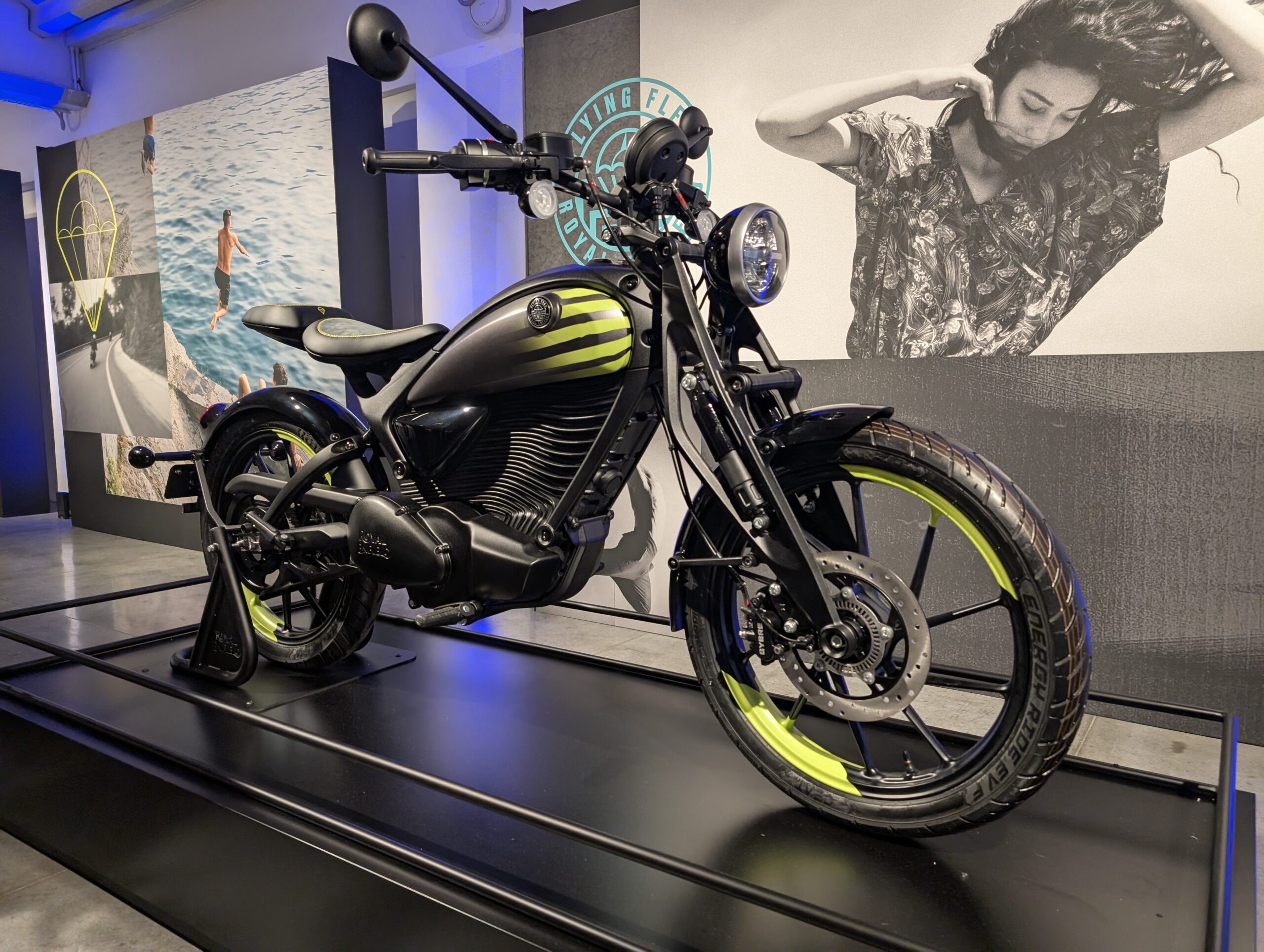
The S6 takes the technology in the cruiser build and ports it over into a sportier, modern build. The bones are clearly the same. but the look and feel open it up to a younger audience.
Overall
We know Royal Enfield and their new Flying Flea teams have the technical chops when it comes to motorcycles and they’ve been working on electric versions for the last 10 years. So, all signs point to them having the capability to build something amazing.
As of right now, though, we have a lot of questions and a few beautiful products. Time will tell whether the company is able to deliver these with a price range, charging speed, and power that is meaningful to consumers. These factors will ultimately determine whether this new generation of electric motorcycles gains traction with customers or not.
“This is the first product — the C6. Many will follow,” Royal Enfield’s chief growth officer for all things electric, Mario Alvisi said. We’ll be keeping a close watch on their progress in the months and years to come, as there’s little more in the world of cleantech that we get excited about than a legacy brand using its resources to build the fully electric, zero emissions future we all need.
For more information about Royal Enfield’s new Flying Flea brand and their electric C6, head over to their website here.

Chip in a few dollars a month to help support independent cleantech coverage that helps to accelerate the cleantech revolution!
Have a tip for CleanTechnica? Want to advertise? Want to suggest a guest for our CleanTech Talk podcast? Contact us here.
Sign up for our daily newsletter for 15 new cleantech stories a day. Or sign up for our weekly one if daily is too frequent.
CleanTechnica uses affiliate links. See our policy here.
CleanTechnica’s Comment Policy

